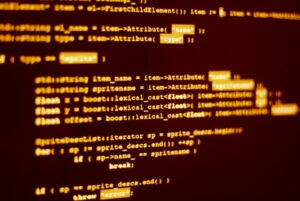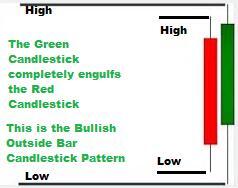Contents:


PIL is a free library for the Python programming language that adds support for opening, manipulating, and saving many different image file formats. Fortunately, there is Pillow, an actively developed fork of PIL, that is easier to install, runs on all major operating systems, and supports Python 3. The library contains basic image processing functionality, including point operations, filtering with a set of built-in convolution kernels, and color-space conversions. Common image processing tasks comprise display; simple manipulations such as flipping, cropping, etc. Image segmentation, feature extractions, classification images restoration, also image recognition. Python is a widely-used programming language for machine learning, deep learning, and many other fields.
The .BoxBlur() filter is similar to the one described in the previous section introducing convolution kernels. In the earlier section discussing kernels, the box blur filter that you used was a 3×3 filter. This means that it had a radius of 1, because the filter extends by one pixel from the center.
10 Best Python Libraries for GUI (2023) – Unite.AI
10 Best Python Libraries for GUI ( .
Posted: Fri, 08 Jul 2022 07:00:00 GMT [source]
One of the most significant applications of Keras are the deep learning models that are available with their pretrained weights. You can use these models directly to make predictions or extract its features without creating or training your own new model. Due to its many uses in the business industry, image processing has been adopted around the globe. It also plays an essential part in artificial intelligence and data science for extracting information out of images. Thus, if you believe your business will benefit from the advantages it offers, keep these widely-used Python libraries, and you’re good to go. One of the great Python libraries for image processing is the Mahotas.
Scikit-Image
It image manipulation a powerful object-oriented interface for the Tk GUI toolkit. Knowing the primary purpose or intent of your project is important to help you narrow down the list of viable Python libraries. To further shrink your pool of selections, consider any additional fields, purposes, and specialties that may intersect with this primary purpose. For example, if your project is data science-focused, you’ll likely want a library that can also support data management and data visualization. Pandas is a popular Python library for data manipulation and analysis.
SimpleITK is a multi-component image analysis toolkit that supports general filtering, picture segmentation, and registration. SimpleITK is built in C++ and may be used with various computer languages, including Python. Images define the world; each image tells a narrative and includes a wealth of information that may be applied in various ways. The technology known as Python Image Processing can be used to obtain this information. It is an important component of computer vision that is used in numerous real-world applications like robots, self-driving automobiles, and object detection. Image processing allows us to change and manipulate millions of photos at once, extracting valuable information.
What to Consider When Choosing a Python Library to Use
The interface is written in Python, which allows for quick development, but the algorithms are written in C++ and optimized for speed. Mahotas is a fast Python image library with minimal code and even fewer dependencies. Image processing is a technique used to modify or enhance an image or extract relevant details from it.
Who profits from open source maintainers' work? – TechTarget
Who profits from open source maintainers' work?.
Posted: Mon, 03 Apr 2023 07:00:00 GMT [source]
Scikit-image is an open source Python package that works with NumPy arrays. It implements algorithms and utilities for use in research, education, and industry applications. It is a fairly simple and straightforward library, even for those who are new to Python's ecosystem. The code is high-quality, peer-reviewed, and written by an active community of volunteers.
The functionality of ImageMagick is typically utilized from the command-line or you can use the features from programs…
In this example, all the points in the grayscale image that had a pixel value greater than 100 are converted to white, and all other pixels are changed to black. You can change the sensitivity of the thresholding process by varying the threshold value. You’ll need to remove the picture of the cat from the background using image segmentation techniques. In this example, you’ll segment the image using thresholding techniques. The red band alone, stored in the variable red, is a grayscale image with mode L. To create the image showing only the red channel, you merge the red band from the original image with green and blue bands that only contain zeros.
You also convert the image into a binary mode using "1" as an argument to .convert(). Thresholding can be used to segment images when the object to segment is distinct from the background. You can achieve better results with versions of the original image that have higher contrast.

Pgmagick is a very simple library that works with over 88 image formats for processing basic manipulations like resizing, sharpening, blur filtering, rotation, and more. Images and videos make up a large portion of the data gathered today. As a result, effective Python image processing for translation and information retrieval is critical for enterprises. Data scientists frequently preprocess the photos before feeding them to machine learning models to attain the required results. As a result, understanding the capabilities of various Python image processing libraries is critical for streamlining operations.
Pgmagick is a Python wrapper for GraphicsMagick which is the collection of tools and libraries for the manipulation of images. Other than image processing work it can also be used in web applications for creating new images. In contrast to MATLAB, which enables matrix manipulation, function and data visualisation, and user interface creation, Python is best suited for online programming. Python supports simulation, vibration, engineering modelling, and dynamic motion in engineering. For segmentation, extraction, and analysis of image data, MATLAB's IC toolkit for image processing makes it a superior choice. However, image processing in Python is dependent on third-party programmes.
Start the Canopy Python Program
In addition, the convenience of using these algorithms and methods also increases. Resize, rotate, sharpen, reduce color, or add special effects to an image. Some of the supported file types are BMP, EPS, GIF, IM, JPEG, PCX PNG, PPM, TIFF, ICO, PSD, PDF, etc. Pillow is a fork of PIL that comes with the support of Alex Clark and others that has evolved into an improved, modern version. It provides support for opening, managing, and saving many image formats.

The library offers official support for Python 2.7, 3.4, and above and works great on PyPy too. One of the most popular general Python libraries is Requests, which aims to make HTTP requests simpler and more human-friendly. Licensed under the Apache2 license and written in Python, Requests is the de facto standard used by developers for making HTTP requests in Python. Recognition of the images with artificial intelligence includes train and tests based on Python.
Scikit-image
Therefore, the RGB image that you create only has non-zero values in the red channel, but because it’s still an RGB image, it’ll display in color. RGBA images also include the alpha value, which contains information about the transparency for each pixel. An RGBA image has four bands, one for each of the colors and a fourth one containing the alpha values. Therefore, an RGBA image of size 100×100 pixels is represented by a 100x100x4 array of values.
Segmentation, color space modification, geometric transformation, filtering, morphology, feature recognition, and other methods are among the many available. Let's look at how we can use the scikit picture to do active contour operations. Pillow, an upgraded version of PIL , is another open-source library for image processing tasks. The fact that it has over 10.5k stars and more than 994k users on GitHub indicates how popular it is among data science enthusiasts.
How to use Numpy Exponential Function exp in Python
As you may expect, there is a sea of libraries available for this interpreted, high-level, general-purpose programming language. See My Top 9 Favorite Python Libraries for Building Image Search Engines for a good introduction to the best Python image processing libraries. Python has fewer and less sophisticated image processing functions than Matlab does. NuPIC is designed to process streaming data in real-time, making it well-suited for anomaly detection, prediction, and classification applications.
- NumPy provides fast and efficient array operations and is a fundamental library for many other scientific Python libraries.
- All functionalities of the MagickWand API are implemented in Wand.
- However, there are some libraries that will require you to pay for access.
- For most image processing tasks, using PIL or Python Image Library can be good.
While there is undoubtedly a great deal of overlap , their scopes are very different. To put it simply, you use OpenCV when creating a robot that is attempting to "see" objects, and Pillow when you want to crop and resize images as well as possibly apply some filtering. It is a useful open-source framework for computer vision tasks with over 809 GitHub forks and 126 dependent repositories. SimpleCV provides a wrapper over the complex code of the OpenCV package, making computer vision applications more accessible and more efficiently deployable. SimpleCV addresses OpenCV's complexity issues by offering easy-to-use functions for commonly used computer vision applications, like optical character recognition . Python-based SimpleCV can be installed on all popular operating systems, including Linux, Windows, and Mac.
Therefore, you’ll still need to use PIL when importing into your code. With those images in hand, you’re now ready to get started with Pillow. Learn how to anonymize your dicom files with ease using our new tool. Learn how to effectively manage and process DICOM files in Python with our comprehensive course, designed to equip you with the skills and knowledge you need to succeed. This is a very useful library for converting Dicom series into nifti files with a single function.
Scikit-image is an open-source Python package that works with NumPy arrays. It implements algorithms and utilities in research, education and industry applications. Scikit-image is a relatively straightforward library, even for those new to Python’s ecosystem. This code is high quality, peer-reviewed and written by an active community of volunteers.
Theano is a https://forexhero.info/ library for numerical computation designed for deep learning and machine learning applications. It allows users to define, optimise, and gauge mathematical expressions, which includes multi-dimensional arrays – the fundamental building blocks of many machine learning algorithms. The first in the list of python libraries for data science is TensorFlow. TensorFlow is a library for high-performance numerical computations with around 35,000 comments and a vibrant community of around 1,500 contributors. TensorFlow is basically a framework for defining and running computations that involve tensors, which are partially defined computational objects that eventually produce a value. Here we have compiled a list of the 10 best Python libraries for image processing.
It's an easy and simple library, even for those unfamiliar with the Python ecosystem. The code is of high-quality that and has been peer-reviewed and written by a large group of volunteers. Beautiful Soup received its name thanks to its ability to parse HTML and XML documents (even with malformed markup called “tag soup”).
These libraries help developers speed up their processes by working with preexisting code without the need to reinvent the wheel. Needless to say, libraries allow developers to focus on the important parts of their applications since they no longer have to code everything from scratch. There’s no doubt that one of the biggest reasons Python is so popular is the fact that there are over a hundred thousand libraries available to choose from. The more libraries and packages a programming language has at its disposal, the more diverse use cases it can have.
Similar to TensorFlow, Keras is another popular library that is used extensively for deep learning and neural network modules. Keras supports both the TensorFlow and Theano backends, so it is a good option if you don’t want to dive into the details of TensorFlow. SciPy is another free and open-source Python library for data science that is extensively used for high-level computations. SciPy has around 19,000 comments on GitHub and an active community of about 600 contributors. It’s extensively used for scientific and technical computations, because it extends NumPy and provides many user-friendly and efficient routines for scientific calculations.